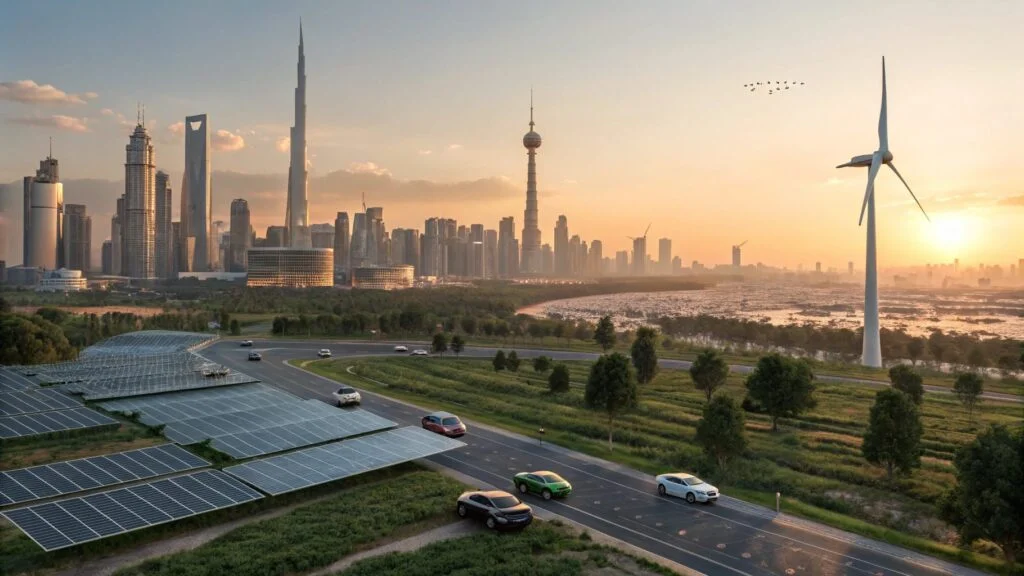Now Reading: Why Net Zero Emissions Is the World’s Hottest Climate Target 2025
-
01
Why Net Zero Emissions Is the World’s Hottest Climate Target 2025
Why Net Zero Emissions Is the World’s Hottest Climate Target 2025

Table of Contents
In recent years, the phrase “Net Zero Emissions” has become one of the most important goals in the global fight against climate change. From world leaders and governments to tech companies and airlines, everyone is talking about reaching net zero by 2050 — but what does that really mean?
In this article, we break down the idea of net zero in simple terms, explain why it’s so important, and highlight the global efforts being made to reduce emissions.
What Does “Net Zero Emissions” Mean?

Net zero emissions means balancing the amount of greenhouse gases released into the atmosphere with the amount that is removed. In short, emissions in = emissions out.
There are two main ways to reach net zero:
- Cutting emissions as much as possible by switching to clean energy, using electric vehicles, and improving energy efficiency.
- Removing remaining emissions by planting trees, using carbon capture technologies, or offsetting carbon through other means.
When a country or company says it will reach net zero, it means that any carbon dioxide or other greenhouse gases they produce will be balanced out by actions that remove or reduce emissions elsewhere.
Why Is Net Zero So Important?
Greenhouse gases like carbon dioxide (CO₂) and methane (CH₄) trap heat in the Earth’s atmosphere, leading to global warming and extreme weather events. The Intergovernmental Panel on Climate Change (IPCC) says that to avoid the most dangerous effects of climate change, the world must limit global warming to 1.5°C above pre-industrial levels.
To do that, global emissions must fall by nearly half by 2030 and reach net zero around 2050.
Without net zero goals, we could see:
- More intense heatwaves
- Rising sea levels
- Increased droughts and floods
- Loss of biodiversity
Which Countries Have Net Zero Goals?
More than 140 countries, representing over 90% of global GDP, have announced net zero targets.
Top Net Zero Commitments:
- European Union: Legally committed to reaching net zero by 2050
- United States: Net zero by 2050
- China: Net zero by 2060
- India: Net zero by 2070
- United Arab Emirates: First Gulf country to pledge net zero by 2050
These targets vary in speed, ambition, and scope, but they all signal one thing: climate action is becoming a global priority.
What Are Companies Doing to Reach Net Zero?
It’s not just countries—many big companies are also setting net zero goals. These include tech giants like:
- Apple: Plans to be carbon neutral across its entire supply chain by 2030
- Microsoft: Pledges to be carbon negative by 2030
- Google: Aims to run on carbon-free energy 24/7 by 2030
In the aviation and automotive sectors:
- Delta Airlines and British Airways are investing in sustainable aviation fuel.
- Tesla, BMW, and Ford are accelerating the shift to electric vehicles (EVs).
- Amazon has ordered 100,000 electric delivery vans to lower emissions.
These moves not only help the planet, but also boost brand image, meet investor expectations, and respond to customer demand for sustainability. Key Sectors Driving the Transition
To reach net zero, several industries must undergo major changes:
1. Energy
The power sector must shift from coal and gas to renewables like solar, wind, and hydro. Clean hydrogen is also being explored as a fuel of the future.
2. Transport
From electric cars to low-emission ships and planes, the transport sector is investing heavily in clean alternatives.
3. Industry
Steel, cement, and chemical industries are responsible for a large share of emissions. Many are exploring carbon capture and storage (CCS) to clean up operations.
4. Buildings
New construction standards, better insulation, and smart energy systems are making homes and offices more energy-efficient.
5. Agriculture
Reducing methane from livestock, cutting food waste, and adopting regenerative farming methods are all essential.
Challenges on the Road to Net Zero
While the goal sounds simple, the journey is not easy. Some of the main challenges include:
- High costs of clean technology in some regions
- Resistance from fossil fuel industries
- Lack of clear policies and enforcement
- Concerns about job losses in traditional sectors
- Greenwashing — when companies falsely claim to be eco-friendly
To succeed, governments and companies must combine bold action with honesty, innovation, and cooperation.
The Good News: Progress Is Happening

Despite the challenges, progress is visible:
- The cost of solar power has dropped by over 80% in the last decade.
- More than 500 global companies have committed to the Science Based Targets initiative (SBTi) for credible emissions reduction.
- Carbon markets and green investments are growing rapidly.
- Young people are more climate-conscious than ever, pushing for real change.
Read More:- Deyaar’s Latest Announcement Shakes Up the UAE Property Market





















